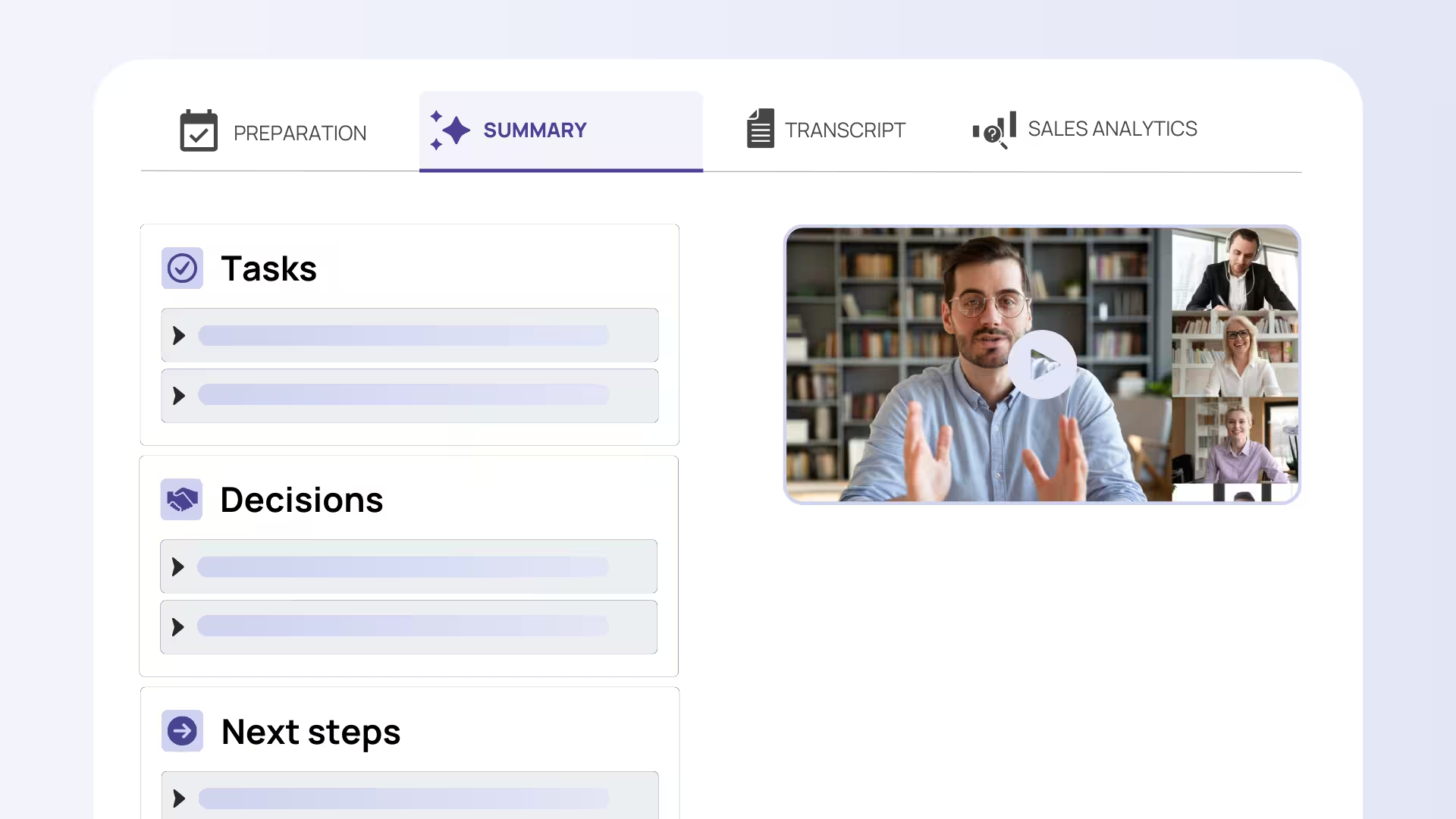Table of Contents
Understanding the Steering Committee (Meeting)
Every organization faces the challenge of keeping projects aligned with strategic goals while managing diverse stakeholder interests. This is where a steering committee becomes essential. A steering committee is a strategic governance body composed of key stakeholders who oversee projects or organizational initiatives, ensuring they stay on track and deliver value.
These committees serve as the guiding force that aligns diverse perspectives, makes high-level decisions, and mitigates risks before they become costly problems. Without proper steering committee meetings, projects often suffer from scope creep, miscommunication, and misaligned priorities.
This article explores everything you need to know about steering committees: their purpose and structure, key roles and responsibilities, best practices for conducting effective meetings, and the tangible benefits they bring to organizations. We'll also cover how modern tools can enhance meeting productivity and documentation, making your steering committee more efficient than ever.
What Is a Steering Committee and Why Is It Important?
Defining the Steering Committee
A steering committee is a strategic body composed of key stakeholders who provide oversight and guidance for projects or organizational initiatives. Think of it as the project's compass—pointing the way forward when decisions need to be made and ensuring everyone stays focused on the ultimate destination.
The main purpose of a steering committee goes beyond simple oversight. These groups guide projects toward their goals, make high-level decisions that project teams can't handle alone, mitigate risks before they escalate, and manage competing priorities. They serve as the bridge between day-to-day project execution and long-term strategic vision.
The Role of Steering Committees in Organizations
Steering committees ensure that project deliverables align with organizational objectives. Without this alignment, even successful projects can fail to deliver business value. They provide the oversight that reduces miscommunication, prevents scope creep, and minimizes project delays.
These committees also facilitate collaboration and accountability across departments and stakeholders. When representatives from different areas come together regularly, they break down silos and create shared understanding. This collaborative approach leads to better decisions and stronger buy-in from all parties involved.
Real-World Impact and Examples
Consider a technology company that implemented a steering committee for their digital transformation project. By bringing together executives, IT leaders, and department heads in structured meetings, they reduced project delays by 30% and improved stakeholder satisfaction significantly. The committee's regular oversight helped identify bottlenecks early and make course corrections before they became major issues.
In the non-profit sector, one organization enhanced their steering committee by including community representatives alongside board members and program directors. This diverse perspective improved project relevance and actually increased funding success rates because projects better reflected community needs and priorities.

Structure and Composition of a Successful Steering Committee
Who Should Be Included?
Building an effective steering committee starts with selecting the right people. Internal stakeholders should include executives who can make strategic decisions, project sponsors who champion the initiative, and department heads who understand operational realities.
External experts or advisors can provide specialized insight that internal teams might lack. This could include industry experts, consultants, or representatives from partner organizations. The key is achieving a balanced mix that covers all critical perspectives—technical, financial, operational, and user-centric viewpoints.
Optimal Committee Size and Diversity
The ideal steering committee size ranges from 5 to 12 members. This range ensures efficient decision-making while maintaining inclusive representation. Smaller committees can make decisions quickly but might miss important perspectives. Larger committees often struggle with scheduling and consensus-building.

Diversity matters because better decisions emerge from varied expertise and viewpoints. When committee members bring different backgrounds, skills, and perspectives, they can identify risks and opportunities that homogeneous groups might miss. This diversity should span functional areas, experience levels, and even thinking styles.
Key Roles Within the Committee
The chairperson leads meetings, maintains agenda focus, and mediates discussions when conflicts arise. They're responsible for keeping meetings productive and ensuring all voices are heard. A skilled chairperson can make the difference between a steering committee that drives results and one that becomes a bureaucratic burden.
Project sponsors champion funding and strategic alignment. They have the authority to approve budget changes and resource allocation decisions. Other members advise on specialized topics, review project status, contribute to decision-making, and ensure accountability in their respective areas.
Organizing Effective Steering Committee Meetings
Preparing for Meetings: Best Practices
Effective steering committee meetings start with careful preparation. Set clear, outcome-driven agendas that align with strategic priorities. Each agenda item should have a specific purpose—whether it's providing information, making a decision, or solving a problem.
Circulate agendas and relevant documents at least a few days in advance. This gives committee members time to review materials and come prepared for meaningful discussion. Use templates for progress reports, risk registers, and decision logs to ensure consistency and completeness.
Preparation also means gathering the right data and insights. Committee members need current information about project status, upcoming decisions, and potential risks. Without this foundation, meetings become inefficient and decisions suffer from incomplete information.
Conducting Productive Meetings
Time-boxing meetings maintains focus and respects members' busy schedules. Most effective steering committee meetings run between 60 and 90 minutes. Longer meetings often lose effectiveness as attention wanes and urgency decreases.
The chairperson's role in facilitating balanced participation cannot be overstated. They must manage dominant personalities while drawing out quieter members, ensuring all perspectives are heard. When conflicts arise, skilled facilitation helps the group work through disagreements constructively.
Encourage open yet goal-oriented discussions. The best steering committee meetings balance thorough exploration of issues with efficient decision-making. Create an environment where people feel safe raising concerns while maintaining momentum toward resolution.
Leveraging Tools and Technology
Virtual and hybrid meetings using video conferencing platforms like Zoom, Microsoft Teams, or Google Meet have expanded participation options. Committee members can join from different locations, making scheduling easier and reducing travel costs.
Collaboration and project management platforms such as Asana or Jira help track action items and progress between meetings. These tools create transparency and accountability, ensuring decisions translate into action.
Modern meeting documentation tools like Sally can automate transcription and meeting summaries, saving significant time while boosting accuracy. Instead of spending hours creating meeting notes, committee members can focus on strategic discussions while technology handles the documentation. This automation also creates searchable records that help track decisions and commitments over time.

Benefits, Challenges, and Evaluation of Steering Committees
Key Benefits of Steering Committees
Steering committees create stronger alignment between projects and organizational goals. This alignment ensures that successful project completion actually delivers business value rather than just meeting technical requirements.
They also improve risk identification and mitigation early in projects. When experienced stakeholders regularly review progress, they can spot potential problems before they become expensive failures. This proactive approach saves time, money, and organizational reputation.
Enhanced accountability and stakeholder engagement represent another significant benefit. Regular steering committee meetings create natural checkpoints that keep projects moving forward. The visibility and oversight motivate project teams while ensuring stakeholder concerns are addressed promptly.
Perhaps most importantly, steering committees enable higher quality decision-making based on diverse expertise. Complex projects require decisions that span multiple domains. Having the right mix of knowledge and authority in one room leads to better outcomes.
Common Challenges and How to Overcome Them
Managing conflicts of interest requires careful attention to committee composition and meeting facilitation. When members have competing priorities, the chairperson must help the group focus on organizational rather than departmental interests. Clear charter documents and decision-making processes help navigate these challenges.
Communication breakdowns can occur when roles are unclear or members become disengaged. Combat this by establishing clear expectations, rotating meeting leadership, and ensuring all members understand their responsibilities. Regular check-ins about committee effectiveness also help identify and address engagement issues.
Maintaining optimal committee size becomes challenging as projects evolve and stakeholder needs change. Regular evaluation of membership ensures the committee remains effective without becoming unwieldy. Sometimes this means making difficult decisions about who stays and who transitions off the committee.

Evaluating Committee Effectiveness
Track key metrics to assess steering committee performance. Meeting attendance rates indicate member engagement. Decision turnaround times show how efficiently the committee operates. Project alignment measures whether the committee's guidance actually improves outcomes.
Stakeholder satisfaction surveys provide valuable feedback about committee effectiveness from different perspectives. These surveys can reveal blind spots and improvement opportunities that internal assessment might miss.
Conduct periodic reviews—typically bi-annually—to adjust structure or processes as needed. Use dashboards and performance indicators to provide real-time insights into committee performance. Tools like Sally can help by providing meeting analytics that show participation patterns and decision-making trends over time.
Conclusion: Harnessing the Power of Steering Committee Meetings
Steering committees play an essential role in guiding projects and strategic initiatives toward success. When properly structured and managed, these committees deliver better decision-making, improved risk management, and stronger alignment between project outcomes and organizational goals.
The key to effective steering committee meetings lies in establishing clear objectives, selecting diverse and engaged members, and adopting proven meeting practices. Regular preparation, skilled facilitation, and systematic follow-through transform steering committees from bureaucratic obligations into strategic assets.
Modern tools can significantly enhance steering committee effectiveness. By leveraging collaboration platforms, virtual meeting capabilities, and automated documentation tools like Sally, committees can focus more time on strategic discussions and less on administrative tasks. These technologies improve both meeting efficiency and transparency.
Start building or refining your steering committee today. Begin with a clear charter, select the right mix of stakeholders, and establish regular meeting rhythms. With proper structure and commitment, your steering committee will become a powerful driver of project and organizational success.

Try meeting transcription now!
Experience how effortless meeting notes can be – try Sally free for 4 weeks.
Test NowOr: Arrange a Demo Appointment

.avif)


